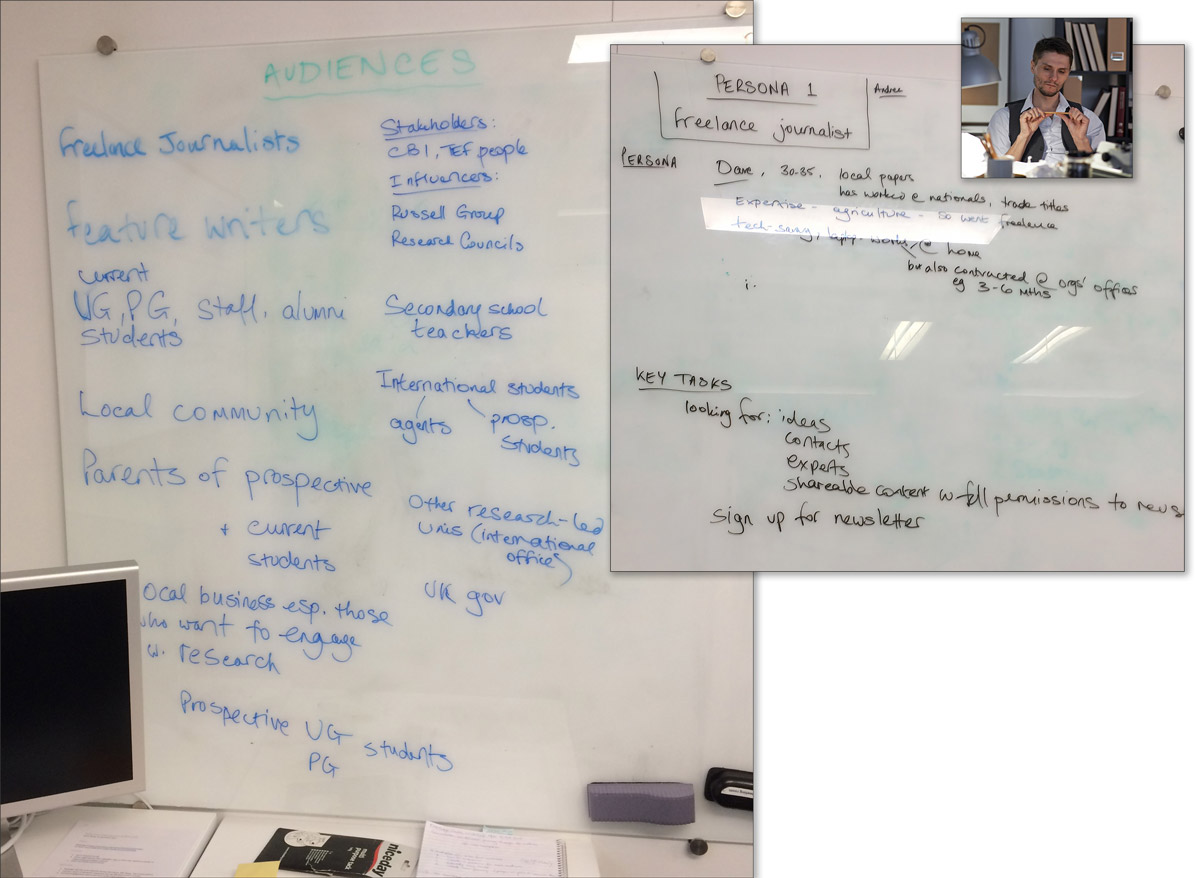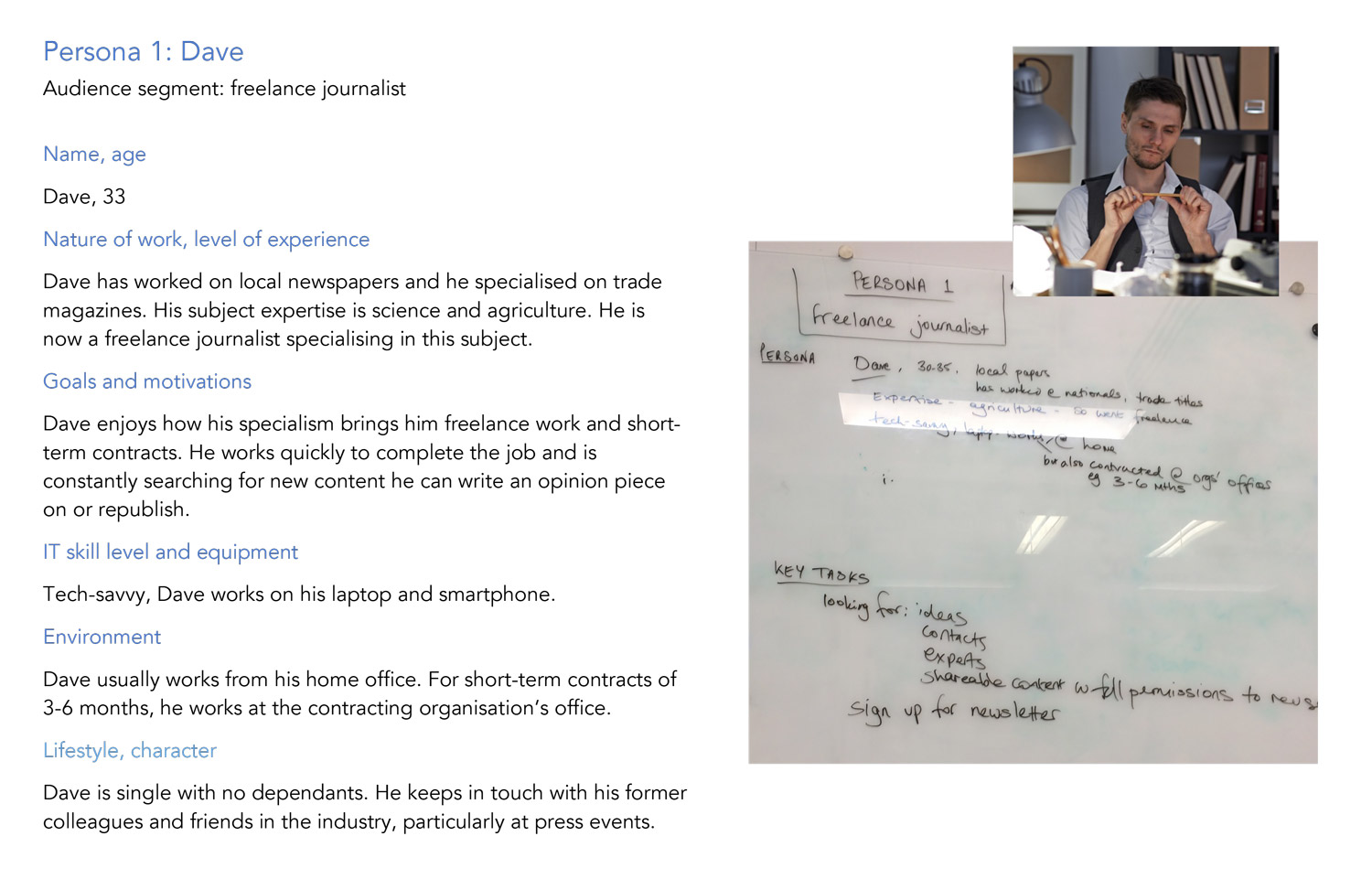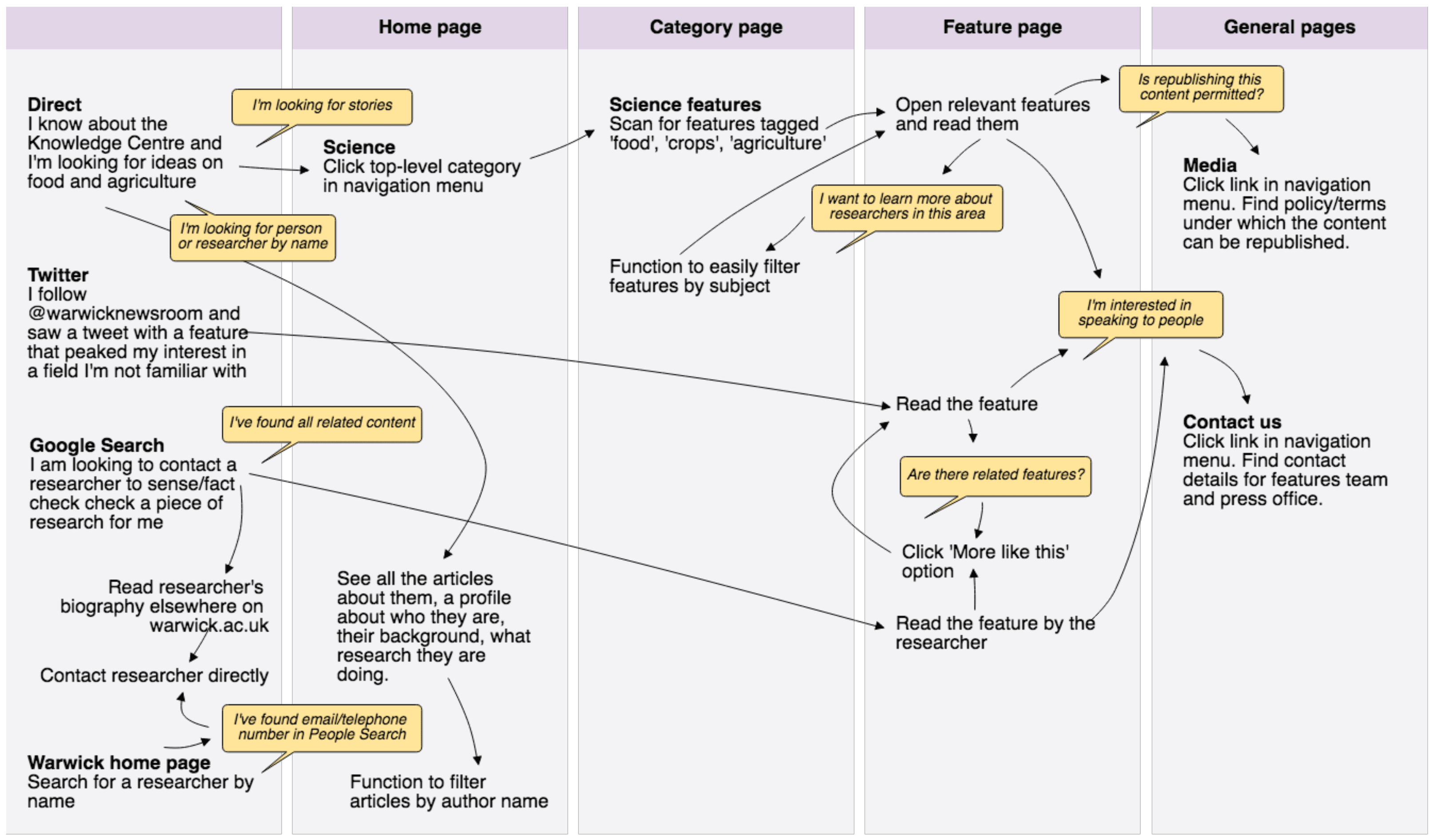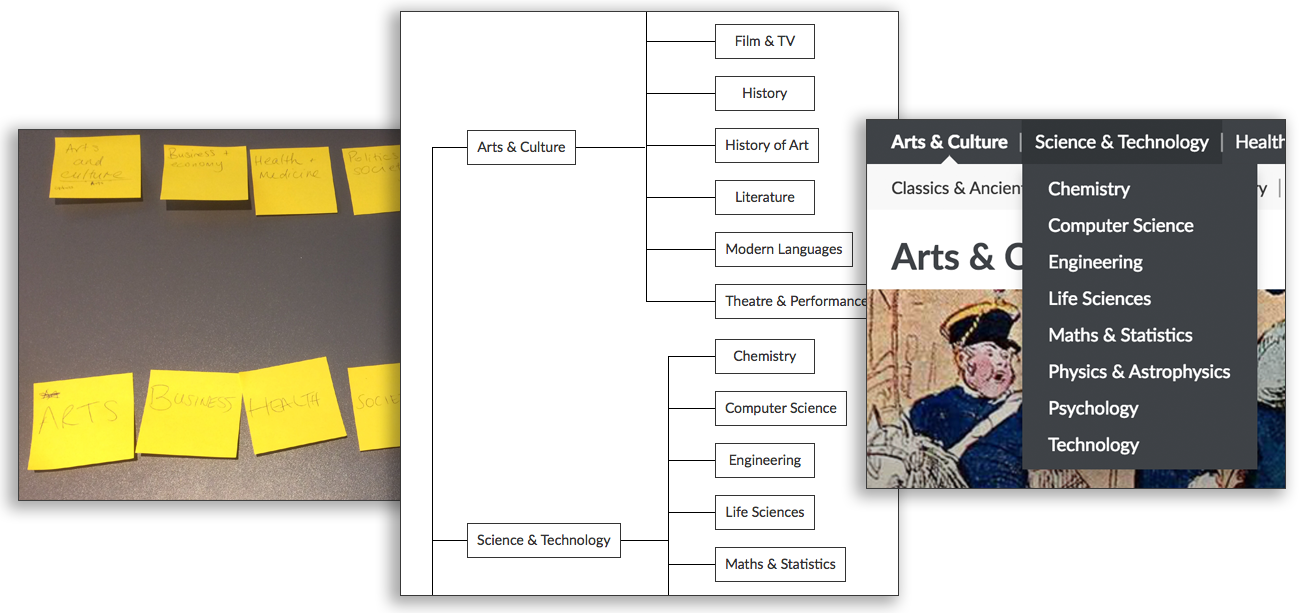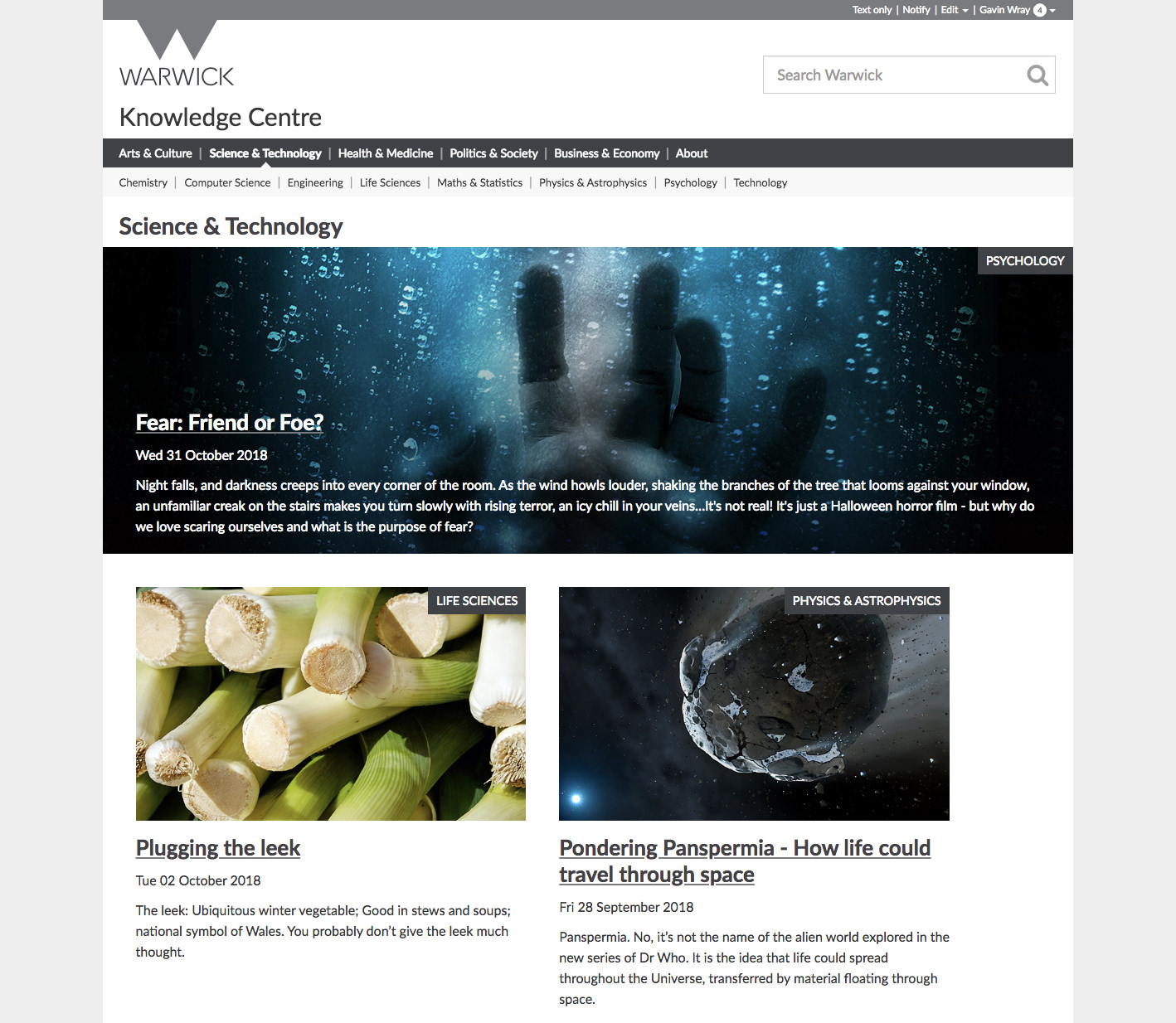Case study: redesigning the Knowledge Centre website
The Knowledge Centre is part of the University's news website where the media relations team publish in-depth stories about Warwick's research and people. The feature-length articles offer more scope for exploration than traditional news stories or press releases and bring Warwick's work to life with new insight, profiles and ideas.
In 2018 we worked with the media relations team to:
- redefine the purpose and goals of their website
- research the audience for the Knowledge Centre
- design a new editorial-style structure and visual presentation
- simplify the workflow for site editors to publish articles
- build custom page layouts and launch the new site
The brief
The media relations team wanted an editorial-style website, similar to online news or magazines, where you browse by subject matter such as politics, culture or technology. Visually, they required a simple, unobtrusive aesthetic to allow the editorial content – the stories, photography and video – to be the focus.
Such sites feature a high churn of articles so that returning visitors see something new to read, which pressurises the publisher to produce new material regularly. Behind the scenes, we needed to automate as much as possible, so that the media relations team could spend less time managing the website and more time on producing articles.
Goals
The overarching aims of the Knowledge Centre site are to:
- increase the reach of Warwick's expertise through syndication, republication and social sharing of articles
- increase engagement with press and media organisations
Research
We delivered a workshop with the media relations team in February 2018. This research phase helped us to define and reach consensus on:
- the articles' intended audience – journalists, research funding decision-makers and current students
- a persona for each of the three audiences
- the essential tasks each audience needs to accomplish on the website
Identifying audiences and developing personas at the research workshop
The full persona describes their name, age, nature of work and experience, goals and motivations, IT skills, environment, lifestyle and character
Following the workshop, we collated the research and discussion to produce a user journey for each persona. These illustrate how a person moves through the website while seeking information, and how the content and navigation of the site helps them to progress.
By mapping the essential tasks to each user journey, we were able to define the elements that the new website must have in its navigation, structure and page content. The theoretical research resulted in practical steps.
A journalist's user journey through the Knowledge Centre website
Structure
Articles on the old website were organised by the University's internal structure of faculties and departments, however, it's good practice to structure content based on the audience's needs instead. For the new website, we collaborated with the media relations team to produce a new information architecture – a structure to organise the articles that also acts as the navigation menu:
Designing the site structure and navigation
Build
Building the new site was a challenge. While changes to the home page content are hand-crafted, every category landing page needed to be automated to minimise the time required to manage the website. The ITS Web Development team created a bespoke landing page to retrieve the latest articles in a category, which are rendered server-side to make the page load time fast and seamless.
The category page for all articles in science and technology
We also designed a new workflow for the editors to prepare articles and photography behind the scenes, with simplified tagging, making use of SiteBuilder’s default news page template to feed the category pages.
Migration and launch
After investigating the site's analytics, we found the Knowledge Centre's traffic distributed over a long tail. Older articles still receive traffic. To assure the user experience, mitigate against seeing ‘page not found’ messages, and to preserve the old site's search ranking heritage, we managed the content migration and URL redirection.

